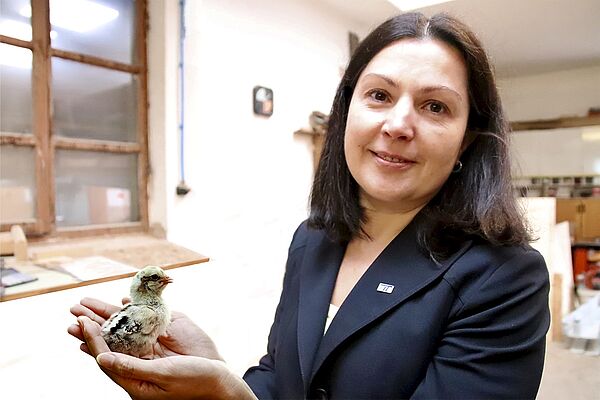Every year, nearly 50 million male chicks die in Germany because they are the wrong sex. Scientist Helene Dörksen from the Institute for Industrial Information Technology (inIT), in cooperation with Coburg University of Applied Sciences, has developed a quick method to determine the sex of chicks before they hatch.
Male chicks do not lay eggs and put on less fat. Therefore, they are unusable for the poultry industry and end up in the shredder. As a result, nearly 50 million male chicks die each year. Researchers have therefore long been searching for a method to determine the sex of chicks while they are still in the egg. A team of scientists from the Institute for Industrial Information Technology at TH OWL and Coburg University of Applied Sciences has now succeeded. "In the egg, different hormones are produced in male and female chicks, and we shine a laser on them through a tiny hole in the eggshell. Based on the light they reflect back, we can determine the sex of the embryo in the egg," says Helene Dörksen, a professor of mathematics at inIT. In science, this method is called fluorescence spectroscopy. Helene Dörksen has succeeded in deriving a system from the measured values of the tests that distinguishes male chicks from female ones. Together with her research colleague, Jens Staufenbiel from Coburg University of Applied Sciences, she has registered the method as a patent. The decisive advantage over already known methods: Fluorescence spectroscopy works on chicken eggs as young as 3 to 6 days old, with the measurement being made through the egg skin. "With other methods, the egg must be completely opened; for our method, we only need an approximately 2mm hole in the lime shell. Another advantage is that the embryo in the egg has no pain sensation at this early stage," explains Jens Staufenbiel.
The mass killing of male chicks is still permitted in Germany. Until there are new, economical procedures to determine the sex in the chicken egg, the Federal Administrative Court has decided in May 2019. The new procedure could be a breakthrough for animal rights activists, who have long called for a ban on the killing.


